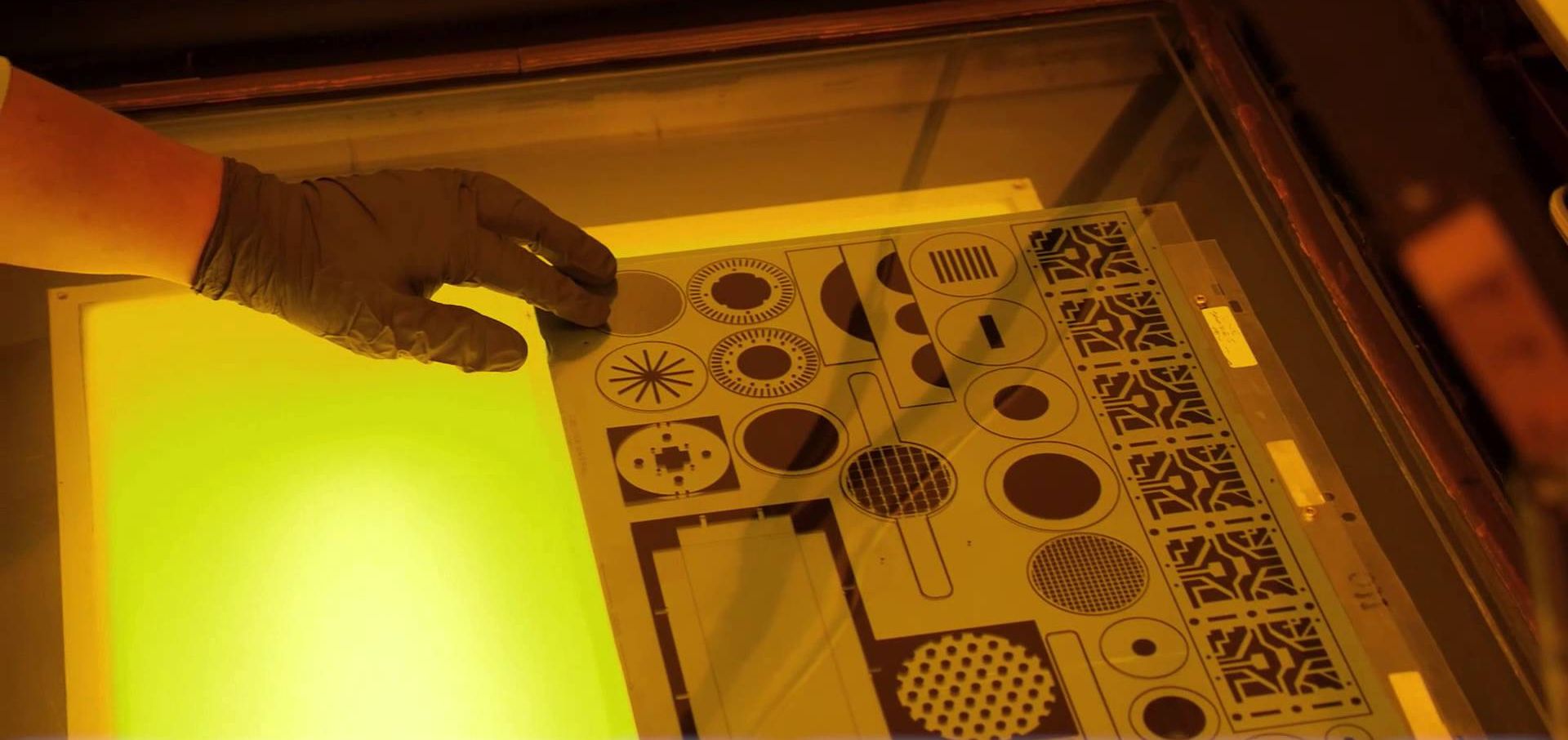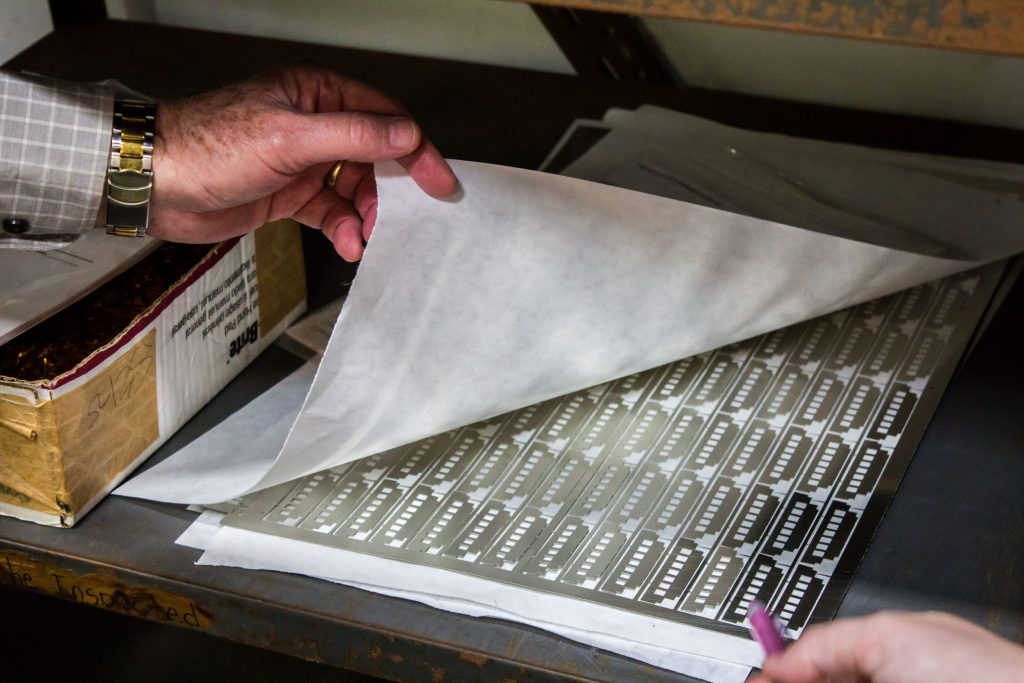Ways to Know If Photo Etching Is Right for You
May 2021
Given the wide spectrum of metal fabrication processes available, it’s understandable if you aren’t certain which of these processes is best for your particular application. A company seeking help in shaping their metal products to precise specifications has multiple time-tested options to choose from, including photo etching, laser cutting, metal stamping, water jetting, CNC machining, and electric discharge machining (EDM).
It would be a mistake, however, to assume that all of these processes are simply interchangeable methods of arriving at the same result. Some fabrication methods are simply unsuited for certain types of materials or production requirements. In some cases, a certain method is technically sufficient to realize design specifications but too expensive or time-consuming to be a practical option.
Photo chemical etching offers a large number of production advantages, and for that reason it is frequently utilized by manufacturers across a broad range of industries. But should you select photo etching for your production run? Why wouldn’t laser cutting or metal stamping—to mention just two alternatives—be more appropriate instead? These are valid considerations. Let’s explore the types of production circumstances where photo etching is likely to provide your ideal fabrication method.
If Heat-Affected Zones Would Harm the Material
Heat-affected zones (HAZs) are those non-melted areas of metal whose properties have been altered due to exposure to high temperatures. The size of a heat-affected zone is largely determined by the part’s thermal diffusivity—lower diffusivity means that the width of the HAZ is greater.
Generating heat-affected zones during the fabrication process can be a serious problem, especially if the parts in question are thin, delicate, or subject to extremely tight tolerances. A HAZ can compromise the integrity of a component and harm its functionality. Certain metal fabrication processes, such as laser cutting and plasma cutting, are known to create heat-affected zones.
By contrast, photo etching does not create thermal stresses and, therefore, does not generate a potentially deforming heat-affected zone that can alter metal substrates. The process works by chemically dissolving materials, not heating them.
If You Must Avoid Mechanical Deformations
Of course, heat isn’t the only type of energy that can affect component integrity. Other potential threats include shearing deformation (associated with stamping and punching) and ablative deformation (associated with laser cutting and electric discharge machining). By its nature, photo etching is not subject to any of these mechanically caused phenomena.
If You Can’t Afford Deburring
Another issue associated with mechanical and thermal stress is the development of burrs. These can be defined as debris composed of metal particles that may develop on the surface of a part during the fabrication process.
The presence of burrs on fabricated metal can interfere with its functionality in its intended application. Left untreated, they are capable of causing a host of problems in fabricated parts, including but not limited to corrosion, excessive friction, and shortened fatigue life. Burrs are very common in laser cutting, especially when the machine operates too slowly or with insufficient output power.
The good news is that these imperfections can be removed through a process called, logically enough, deburring. This can occur manually (i.e., a technician simply scrapes off the burrs) or mechanically (i.e., via a specialized machine). The bad news is that, no matter how it’s done, the deburring process tends to be time-consuming and/or costly.
With photo etching, this issue can be avoided altogether. Because it does not generate thermal or mechanical stress, photo chemical etching will not generate burrs.
If Your Materials Are Extremely Tough

It goes without saying that metals can vary substantially in their degree of toughness—and this is a factor that must be taken into account when determining which kind of fabrication process you should use. Metal stamping, for instance, can become problematic if you are working with very tough metals or alloys such as titanium.
These concerns are minimized when you opt for photo etching. One of the chief benefits of this process is its ability to handle a wide variety of metals, including those that are extremely tough. Aside from titanium, photo etching can be successfully utilized on stainless steel, copper, brass, chromium, nickel, aluminum, and many other metals and alloys. That’s because photo etching, as a chemical process, does not depend on the metal’s ability to absorb mechanical stresses. This makes it particularly useful in the fabrication of metals characterized by a high degree of toughness.
If You Have an Impending Deadline
Businesses that have to contend with quick turnaround times often find that photo etching offers the only way to meet their deadlines. Photo etching is a relatively speedy process, which means parts can be created and delivered in a matter of weeks, not months. Even extremely complicated designs can be produced rapidly.
If You Need to Minimize Tooling Expenses
Creating the right tooling is a vital step in the fabrication process, and it often demands a significant amount of time and money. Metal stamping, for instance, requires a fairly pricey initial tooling outlay. The expenses associated with tooling can increase exponentially if design revisions and corrections must be made later on.
Things are simpler—and less costly—when it comes to photo chemical etching. Phototools are created with CAD data that the customer provides. If needed, alterations to an existing phototool can be made quickly and inexpensively. This is one of the main reasons why many businesses choose photo etching when they want to create a quick, low-cost prototype.
If You Need Consistently Tight Tolerances
The lack of dependence on mechanical tooling gives photo etching an advantage in repeatability in design. As a CAD-guided process, photo chemical etching is not susceptible to the kind of tooling fatigue that is so common to many alternative types of fabrication methods and which can begin to create serious imperfections in a production run if it is not addressed in time. With photo chemical etching, even extremely fine and precise features can be created again and again without fear that inconsistencies will arise during the manufacturing process.
The foregoing does not cover all the factors that must be considered when selecting a fabrication option for your production run. To learn more about photo etching, feel free to contact United Western Enterprises, Inc., at 800-964-6461. You may also request a quote through our convenient online form.
We look forward to providing you with the same level of expertise we have given our past customers, who hail from a variety of industries, from the medical field to the aerospace sector. We are an AS 9100D / ISO 9001:2015 Certified Company located in Camarillo, California.
